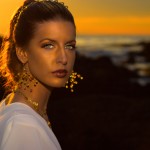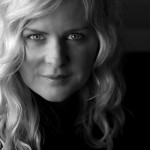This post can be somewhat long. You can see the highlights here.
Do you Hate Photos of Yourself?
We all have this issue. We see a photo of ourselves and we think “that doesn’t even look like me!”
I’m always hearing from clients that they never like photos of themselves. Then, when they see the finished head shot or portrait of themselves, they say “I like this! I wish I really looked like this”
This is always mind blowing to me, because I just pointed my camera at you and took your photo. And I am showing it to you. So, you apparently look like this.
The Explanation?
Most consumer “point and shoot” cameras, even the high resolution ones, have very small lenses. They also have small censors and small flashes. If you’ve ever had a friend or family member take a photo of you with their camera, you will notice shiny hot areas on your nose and forehead. And, the coloration may be bad. And phone cameras, as good as they’ve become, have the smallest sensors with the smallest, hottest, uncontrollable flash.
A good, professional photographer knows how to prevent this. A professional with the correct equipment and the knowledge of proper exposure, use of light, when and how to use a flash, and the correct lens will be able to take a photo of what you really look like.
That is why you pay us.
Even if your friend or family member has the top of the line professional camera as many people today are able to afford. Knowing how to use it is the key to a good photograph. And regardless of the number of instagram filters someone has, the final quality of a photo will never match the quality of a good camera. Especially if you need the photo printed ever.
Photography is so much more than just taking a photograph. Knowing what light will do in any given situation is very important. Knowing how to use the available light to your benefit, when the light is wrong, and even when to augment light with a flash can make all the difference in the world for the finished product. Beautiful lighting used in the wrong way can created very unflattering results. And, what looks amazing with one person’s features can look terrible with someone else.
Let’s Talk Lighting.
There are so many aspects to lighting when it comes to photography that it is difficult to discuss them all. So, there is no way I can cover the entire knowledge base necessary on light here.
However, what I can tell you is that the best thing you can remember when trying to get better photos of yourself or friends is, diffuse the light.
Direct, unflitered light is always going to be harsher. And the smaller the source providing the light, the harsher still. Ever notice photos taken on a sunny day are harsher than those on a cloudy day. That is because the clouds diffuse the light. Shade acts in the same manner. Further, ever notice the small 1 inch square flash on a consumer point and shoot camera or the mini flash on a cell phone? It is that small square, tasked with lighting the entire scene, that causes the harsh red eyes and hot spots on your nose and forehead. This is also what causes harsh shadows in your family birthday party photos. Think of a small flash light lighting a room versus several bulbs dispersed throughout the room with shades. Same idea.
The secret is to take the source of light and diffuse it as much as possible to soften shadows. This is why when you see a professional, we have a large camera mounted flash, often with a soft box at an event or we use several larger lights with soft boxes and/or umbrellas in the studio.
If all you have is a point and shoot with a built in flash, you are limited. But you can soften the light source by taping tissue paper over the flash. If you do have a better quality camera with a top mounted adjustable flash, try a soft box or bouncing it off the ceiling to create softer, redirected light. The ultimate goal is to soften the light and diffuse it.
And even on a sunny day, try not to shoot mid day. And, if you have no choice, try to find shade.
Technology – The Double-Edged Sword
Technology is better than ever. This, I am convinced, is a double-edged sword.
Cameras and lenses are able to pick up more detail than ever before. This means photographs are sharper than ever possible with film. This also means, thanks to technology, we can see every detail of an object that even our own human eye may not notice standing at 6 feet away.
With modern cameras, we can take a photo in darker light than ever possible with film. And, the grain we once had with low light film is almost non existent.
This sharpness, while incredible for things like commercial, product, or food photography, is not great for portraits. In other words, things are almost hyper realistic. Your pores that I can’t see standing in front of you now look as sharp as moon craters through the Hubble telescope thanks to a lens/censor combination capable of more detail than ever possible with film.
This is where proper knowledge of soft filters or Photoshop retouching to emulate such softness is necessary. A good photographer will know how to apply the right lens filter, or how to retouch a photo so it is realistic. Also note that bad retouching can make a photo look plastic, fake, and remove too much detail. A good photographer knows how to capture the best possible image to start with, and how to process it properly.
Makeup
One of the things that can help you as the subject it proper knowledge of makeup or a good makeup artist. Never use reflective or shiny makeup. Anything that looks great on your eyes at a night club with glitter, is going to look terrible in photos. That reflective quality is going to reflect light right into the camera and make your eyes, lips, or anything else it is on into hot spots. Always wear matte finish makeup and use light, flesh tone powder on your nose, forehead and cheekbones. Even if you’re a man, a little powder can help if you have oily skin. The goal is to look better in your photographs; you can wash it off after.
Wardrobe
When it comes to clothing, you need to wear clothes that you feel good in; clothes that flatter you. You want to wear colors that compliment you. If you are light complexioned and wear dark clothes (or vice versa), it can come out poorly (This is part of what makes wedding photography so difficult). And try to always stay with solids or subtle patterns. Plaids and bright florals can make a bad photograph.
Digital vs Film
If you don’t understand what you are working with, the final product can be effected negatively. In the days of film, photographers had many options. There were different types of film to use depending on what you were shooting. Whether it be commercial work, nature, people, or even people under indoor lighting.
Film used for commercial work had more vivid color reproduction. Film for portraiture had more subtle color. If you used commercial film for portrait work people in the photos would have redder skin and contrast would be harsher. Sometimes this was desirable in fashion photography with professional makeup artists. But mostly, not for portrait work. Here, again, is where the proper knowledge of photo processing and retouching comes into play.
A digital photograph is a raw starting point for a finished product. Knowing what to do with that starting point to get it to the proper finished product is what makes the difference.
Processing
Professional digital cameras have settings to color correct for various lighting, be it sunlight, shade, a cloudy day, florescent, or tungsten light. But, this is just a small step in proper photography. What if there is mixed lighting? Further, most consumer point and shoot cameras are set to auto correct and get an average that is “close enough”. The photo that your, or virtually any, digital camera takes is a basic, raw starting image. Even if you shot it as a j-peg. In order to get the most out of it, you need to know what you are going for in a finished product. Should the color be vivid and saturated as in nature or fashion photography? Or should it be muted to tone down skin colors as with portrait photographs? Most people will look too pink or red in a highly saturated photograph without proper makeup from a professional makeup artist, or, without processing the photo in a custom way to allow the background to remain saturated and the people to be less saturated.
Some of this is handled by shooting in RAW mode with a professional camera and using the software from the camera manufacturer to “process” the “digital negative” before even opening the file in Photoshop much the same way photographers used to custom process their negatives in a lab. Many consumer cameras do not have the option of shooting in RAW mode. This makes processing the photo limited, so you are stuck with the auto settings on the camera. However, cameras are becoming more sophisticated, so reading the manual and/or taking a class can help.
What you can Control as the Subject
There are only so many things you can control as the person being photographed. To recap, the best things you can do for yourself if you aren’t hiring a professional are:
- Work with diffused light by standing in the shade and/or diffusing the flash
- Wear matte finish makeup and/or use skin toned powder
- Wear clothes that compliment your skin tone
- Use a good camera with good quality flash or at least diffuse the flash











